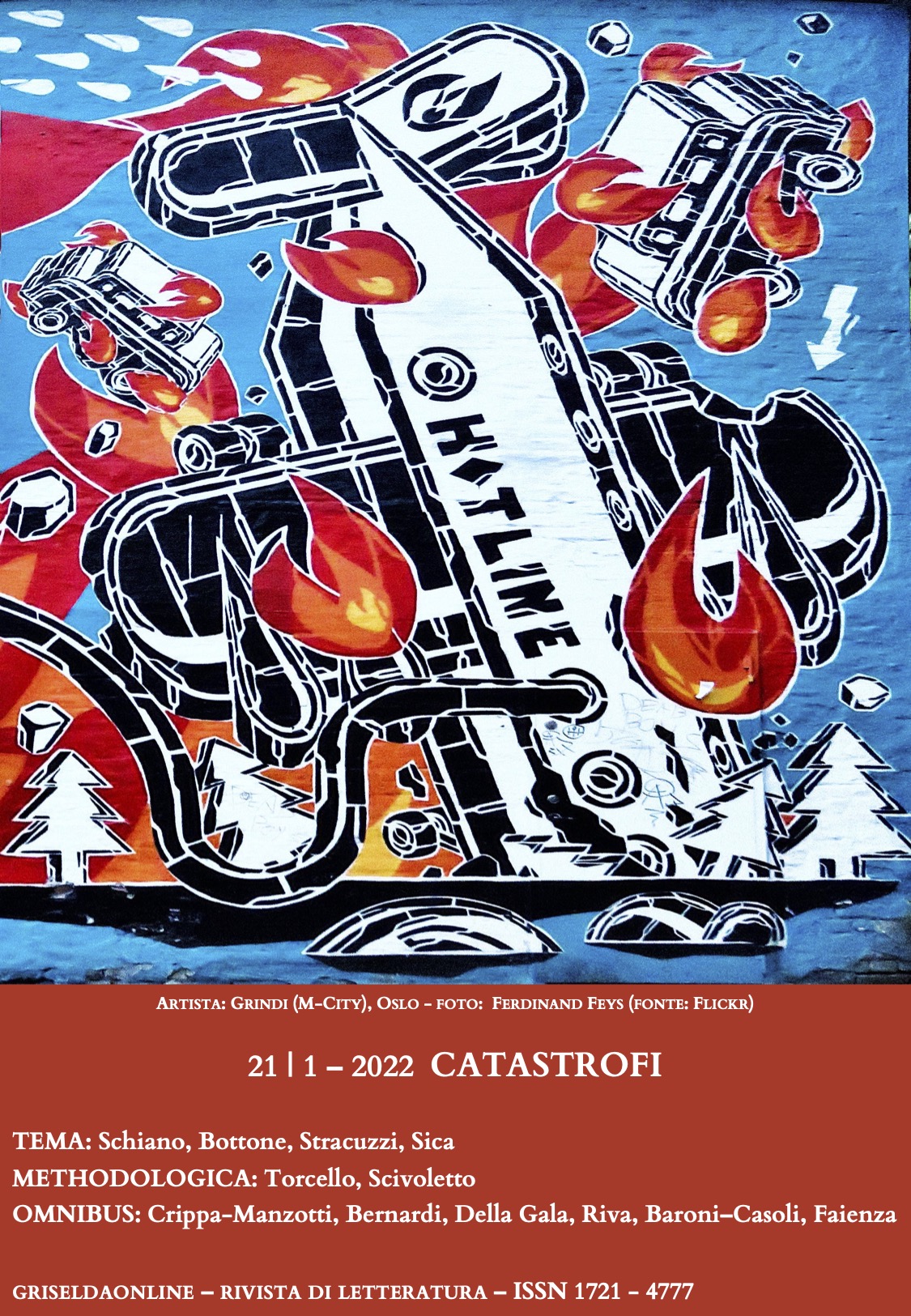Flying News, Perpetual memories: Remembering Catastrophe in Early Modern period
DOI:
https://doi.org/10.6092/issn.1721-4777/14920Keywords:
Disasters, Reports, Memory, News, Relaciones de sucesosAbstract
The innovative European news literature of Early Modern Period provides valuable evidence of a perceptible change in the way catastrophes are perceived, interpreted and narrated. To the ephemeral, flying character of catastrophe news and the materials that spread it corresponds a complex and longer-lasting relationship with memory: the informative tale of the catastrophe settles and stereotypes very quickly, builds a composite shared baggage of anecdotes and protagonists shared by the various printing centers, provides a field of political tension coveted by the various news genres of the time that highlight a common desire to grab the most reliable and truthful version of the calamitous event for posterity. The survey of a sample of relazioni (reports) dedicated to catastrophes and published in the decades of maximum development of European pre-periodical genres (1600-1650), aims at observing the relationship between news and disaster memory by reconstructing the different levels of sedimentation, elaboration and memorialistic manipulation that emerge between the meshes of the tale.
Downloads
Published
How to Cite
Issue
Section
License
Copyright (c) 2022 Gennaro Schiano

This work is licensed under a Creative Commons Attribution-ShareAlike 4.0 International License.





